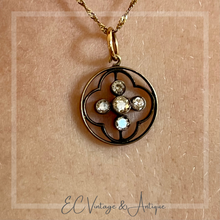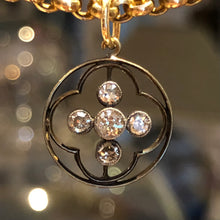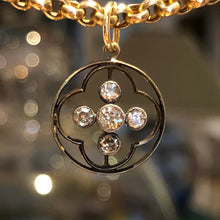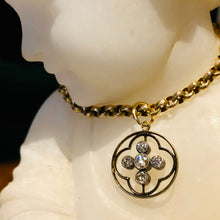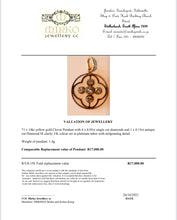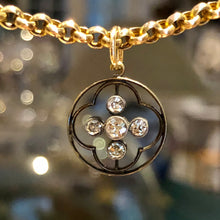
Antique Victorian clover diamond pendant with five old cut diamonds set in 15ct blackened gold, fashionable for the Aesthetic Victorian era (1886-1901). Diamonds: 0.10ct and 4 x 0.07ct single cut diamonds G/H colour Vs/SI clarity. Diamonds set in tube settings with milgraining. Size: 14.5mm diameter. Size with bail: 20mm. Weight: 1.9g. NB: EXCLUDING CHAIN.
VALUATION: Valuation certificate from Mirko Jewellers to the value of R17,000.
The third Victorian era was known as the Aesthetic period (1886-1901). Women were trying to get the vote and the suffragette movement had a huge influence on fashion and jewellery. Significantly less jewellery was worn by women, especially during the day. As more women moved into the work force and became involved in politics, jewellery became lighter, smaller, and simpler. Delicate, open metal work was used, and stones were set in an airy manner, reducing the metal as much as possible. The Aesthetic artists worshipped beauty and rebelled against the materialism and ugliness of industrialisation and mass production. Medieval and Gothic designs in gold, blackened gold, oxidised silver and gunmetal were popular.










